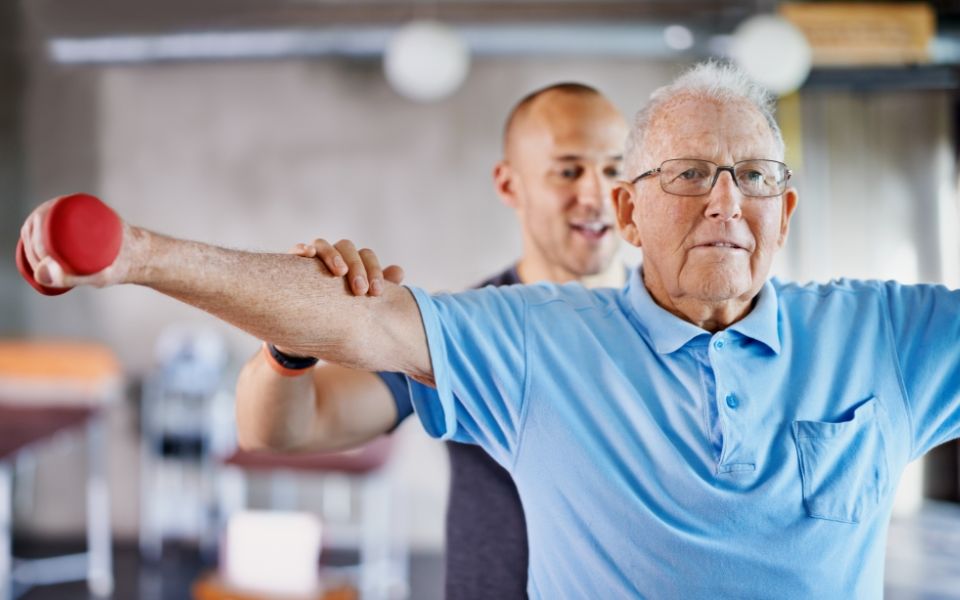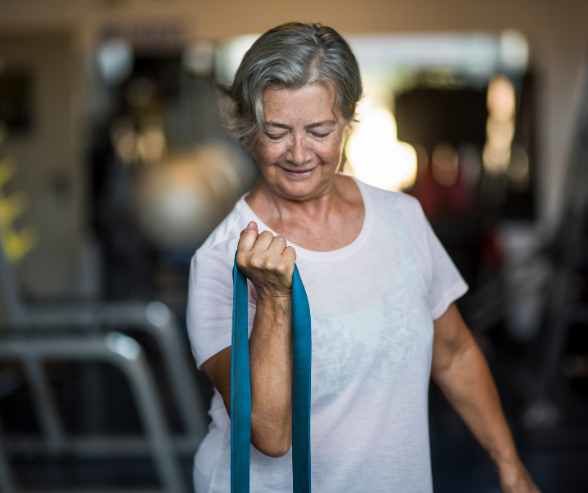Osteoarthritis and Exercise: What You Need to Know
Osteoarthritis is a common form of arthritis that affects millions of people worldwide. It causes the cartilage in your joints to break down, leading to pain, stiffness, and reduced mobility. While there is no cure for osteoarthritis, exercise is one of the most effective ways to manage its symptoms and improve your overall quality of life.
Benefits of Exercise for Osteoarthritis
-
Reduce pain and stiffness: Exercise can help reduce pain and stiffness in your joints by strengthening the muscles around them and improving blood flow to the affected areas.
-
Improve joint function and flexibility: Regular exercise can help improve joint function and flexibility, making it easier to perform everyday activities.
-
Strengthen muscles around the joints: Strong muscles provide support and stability to your joints, reducing the strain on the cartilage and minimizing pain.
-
Enhance overall fitness and well-being: Exercise can help you maintain a healthy weight, reduce stress, and boost your overall mood and energy levels.

Types of Exercise for Osteoarthritis
-
Low-impact aerobic exercise: Low-impact aerobic exercise, such as walking, swimming, or cycling, is gentle on your joints and can help improve cardiovascular fitness and overall health.
-
Strength training: Strength training exercises, such as lifting weights or using resistance bands, can help strengthen the muscles around your joints and improve joint stability.
-
Range-of-motion exercises: Range-of-motion exercises help maintain or improve the flexibility of your joints, reducing stiffness and improving mobility.
-
Water-based exercises: Water-based exercises, such as water aerobics or swimming, provide support for your joints and reduce the impact on them while still providing a good workout.
Exercise Guidelines for Osteoarthritis
-
Start slowly and gradually increase intensity: Begin with short, low-intensity workouts and gradually increase the duration and intensity as your fitness level improves.
-
Listen to your body and rest when needed: Pay attention to your body's signals and rest when you feel pain or fatigue. Don't push yourself too hard, especially when starting a new exercise program.
-
Warm up before exercise and cool down afterward: Warm up with light activity before your workout and cool down with gentle stretches afterward to prevent injuries.
-
Work with a qualified exercise professional: Seek guidance from a qualified exercise professional, such as a physiotherapist or certified personal trainer, to develop a safe and effective exercise program tailored to your needs and limitations.

Managing Pain During Exercise
-
Use pain as a guide, not a barrier: Some discomfort during exercise is normal, but if you experience sharp or persistent pain, stop the activity and consult your doctor or exercise physiologist.
-
Modify exercises as needed: If certain exercises cause pain, modify them or try alternative exercises that are less stressful on your joints.
-
Use appropriate pain management techniques: Use appropriate pain management techniques, such as ice packs, heat therapy, or over-the-counter pain relievers, as recommended by your doctor.
-
Communicate with your doctor or exercise physiologist: Keep your doctor or exercise physiologist informed about your exercise routine and any pain you experience so they can monitor your progress and adjust your program as needed.
Finding the Right Exercise Program for You
-
Consider your individual needs and limitations: Choose exercises that are appropriate for your fitness level, joint condition, and overall health.
-
Seek guidance from an exercise physiologist: Consult a qualified exercise physiologist to develop a personalised exercise program that suits your specific needs and goals.
-
Find an enjoyable and sustainable exercise routine: Choose activities that you enjoy and can incorporate into your daily routine to maintain a consistent exercise habit.
Conclusion
Regular exercise is an essential part of managing osteoarthritis and improving your overall health and well-being. By following these guidelines and working with a qualified exercise professional, you can find an exercise program that suits your needs and helps you live a more active and fulfilling life.
Empower Your Osteoarthritis Journey with Personalised Exercise Guidance
Take the next step toward managing your osteoarthritis and optimizing your health by booking an appointment with one of our Accredited Exercise Physiologists. Our experienced professionals will create an individualised exercise plan tailored to your specific needs, goals, and limitations.
Benefits of Working with Our Accredited Exercise Physiologists:
-
Individualised assessment and plan: Receive a comprehensive assessment of your condition, fitness level, and goals to develop a personalised exercise program that suits your unique needs.
-
Expert guidance and support: Gain expert guidance on proper exercise techniques, pain management strategies, and overall joint health to ensure safe and effective workouts.
-
Ongoing monitoring and adjustments: Benefit from regular monitoring of your progress and adjustments to your exercise program as your condition and fitness level improve.
Schedule Your Consultation Today:
Embrace a proactive approach to managing your osteoarthritis and enhancing your overall well-being. Contact us today to schedule a consultation with one of our Accredited Exercise Physiologists and embark on a personalised journey toward improved joint health, pain management, and overall fitness.
